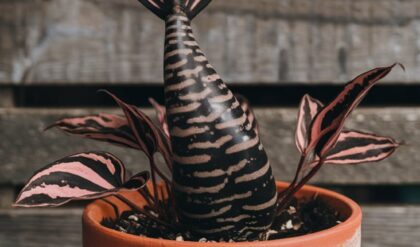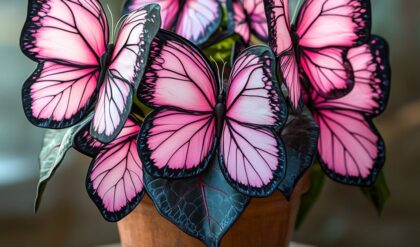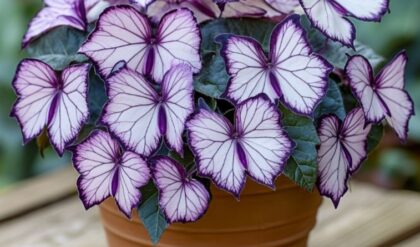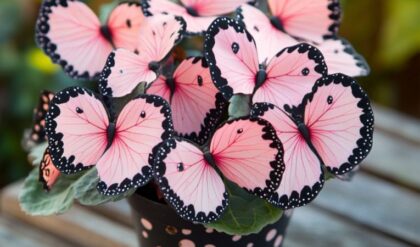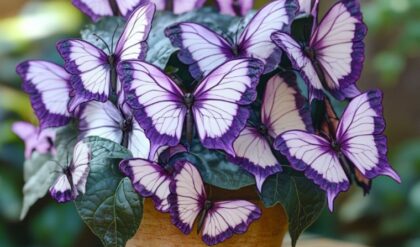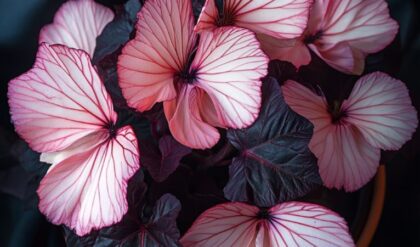The Begonia rex, commonly known as the Rex Begonia, is a horticultural marvel that has captivated plant enthusiasts and interior designers alike. With its stunning foliage resembling an artist’s palette, this tropical beauty brings a touch of exotic charm to any indoor space. But beyond its visual allure, the Rex Begonia holds a wealth of fascinating characteristics, care requirements, and cultural significance that make it truly unique in the world of houseplants.
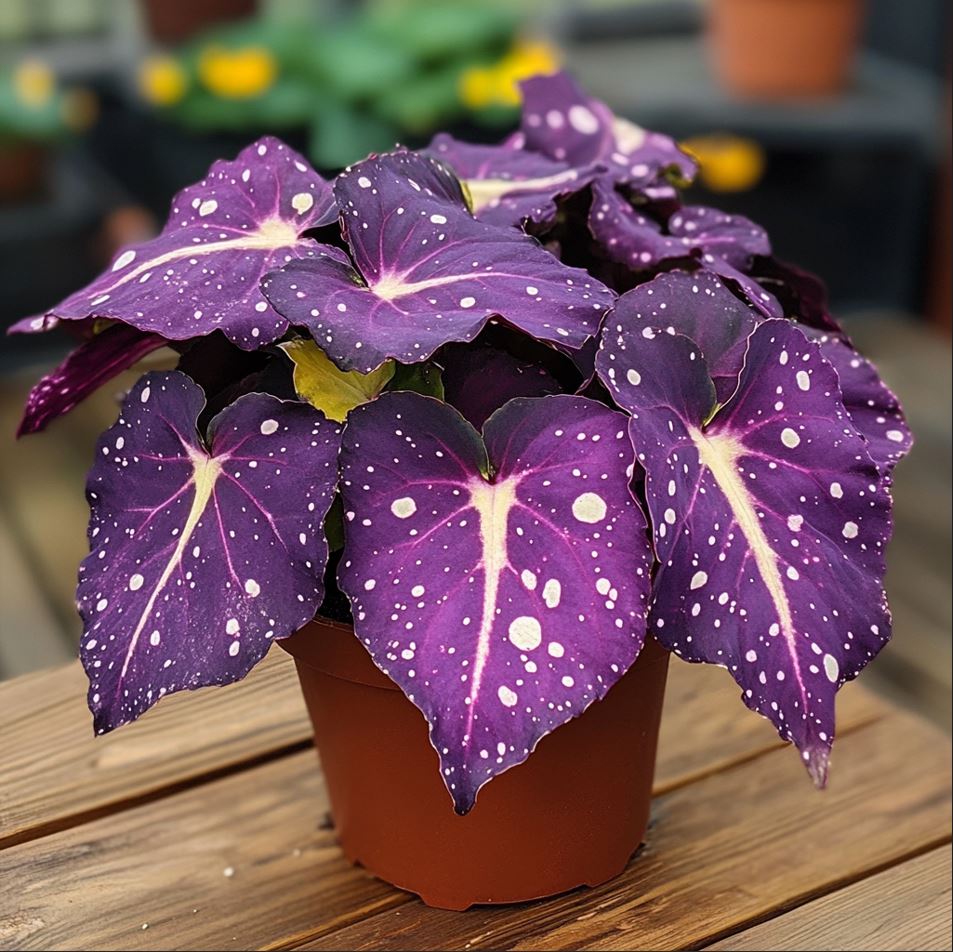
The Alluring World of Rex Begonias
The Rex Begonia is more than just a pretty face in the plant kingdom. Its vibrant leaves, intricate patterns, and rich textures have earned it a special place in the hearts of plant lovers worldwide. But what makes this particular begonia so captivating, and why has it become such a popular choice for indoor gardening?
A Canvas of Colors and Textures
Rex Begonias are renowned for their spectacular foliage, which can display an astonishing array of colors and patterns. From deep burgundies to silvery greens, and from bold pinks to metallic sheens, these plants seem to defy the conventional boundaries of leaf coloration. The leaves themselves are often large and heart-shaped, with distinctive veining that adds depth and character to their appearance.
The diversity of Rex Begonia varieties is truly staggering. Some cultivars feature spiraling patterns that seem to swirl across the leaf surface, while others boast stark contrasts between dark edges and lighter centers. This incredible variety means that there’s a Rex Begonia to suit almost any aesthetic preference or interior design scheme.
Beyond color, the texture of Rex Begonia leaves is equally fascinating. Many varieties have a slightly fuzzy or velvety feel, adding a tactile dimension to their visual appeal. This unique texture not only enhances the plant’s ornamental value but also serves a practical purpose in its natural habitat, helping to repel water and protect against pests.
The Science Behind the Beauty
The stunning appearance of Rex Begonias is not just a happy accident of nature; it’s the result of complex biological processes. The vivid colors and patterns we admire are actually adaptations that help the plant survive in its native environment.
In the dim light of tropical forest floors, the varied leaf pigmentation allows Rex Begonias to capture and utilize different wavelengths of light more efficiently. The darker areas of the leaves contain higher concentrations of chlorophyll, while the lighter portions may reflect excess light or contain other pigments that aid in photosynthesis under low-light conditions.
Moreover, the intricate patterns on Rex Begonia leaves can serve as camouflage, helping the plant blend in with the dappled light and shadow of the forest understory. This adaptation may have evolved to protect the plants from herbivores, making them less conspicuous to potential predators.
The Rex Begonia’s Place in Plant Evolution
Rex Begonias belong to the larger Begonia genus, one of the largest genera of flowering plants with over 1,800 known species. The incredible diversity within this genus is a testament to the adaptive capabilities of plants and the power of evolution.
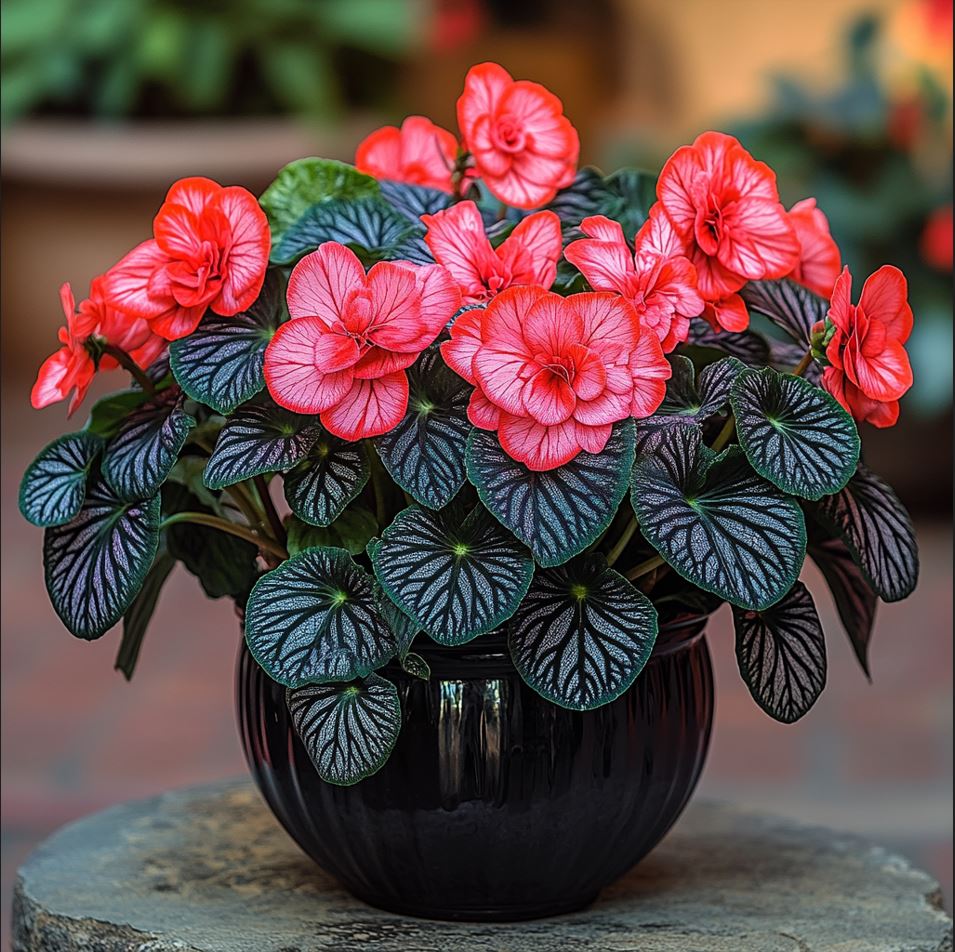
The Rex Begonia’s ancestors likely originated in tropical and subtropical regions of Asia, Africa, and the Americas. Over millions of years, these plants diversified and adapted to a wide range of habitats, from rainforest floors to mountain slopes. The Rex Begonia, with its highly ornamental foliage, represents a specialized branch of this evolutionary tree, one that has been further refined through selective breeding by horticulturists.
Understanding the evolutionary history of Rex Begonias not only gives us a deeper appreciation for their beauty but also provides valuable insights into plant adaptation and biodiversity. It reminds us that the houseplants we cultivate are not just decorative objects, but living embodiments of nature’s ingenuity and resilience.
Mastering the Art of Rex Begonia Care
Caring for a Rex Begonia can be a rewarding experience, but it requires attention to detail and an understanding of the plant’s specific needs. These tropical beauties have evolved to thrive in particular conditions, and replicating those conditions in our homes is key to their health and longevity.
Creating the Perfect Environment
Rex Begonias are native to tropical and subtropical forests, where they grow in the dappled shade of the forest understory. To thrive in our homes, they need an environment that mimics these natural conditions as closely as possible.
Light is perhaps the most critical factor in Rex Begonia care. These plants prefer bright, indirect light. Direct sunlight can scorch their delicate leaves, while too little light will result in poor growth and faded colors. A north or east-facing window often provides ideal lighting conditions, but if you’re dealing with a particularly bright space, a sheer curtain can help diffuse the light.
Humidity is another crucial element of Rex Begonia care. In their natural habitat, these plants are accustomed to high humidity levels. Most homes, especially in temperate climates, have much drier air. To compensate for this, you can increase humidity around your Rex Begonia in several ways:
- Use a pebble tray filled with water placed beneath the plant pot.
- Group your Rex Begonia with other humidity-loving plants.
- Use a room humidifier, especially during dry winter months.
- Mist the leaves regularly, but be careful not to overdo it, as constantly wet leaves can lead to fungal problems.
Temperature is also an important consideration. Rex Begonias prefer warm conditions, ideally between 60°F and 75°F (15°C to 24°C). They’re sensitive to cold drafts, so keep them away from air conditioning vents and drafty windows.
Soil and Watering: Finding the Right Balance
The right soil mix is crucial for Rex Begonia health. These plants prefer a well-draining, peat-based potting mix. A good recipe might include equal parts peat moss, perlite, and regular potting soil. This mixture provides the necessary nutrients while ensuring that excess water can drain away quickly.
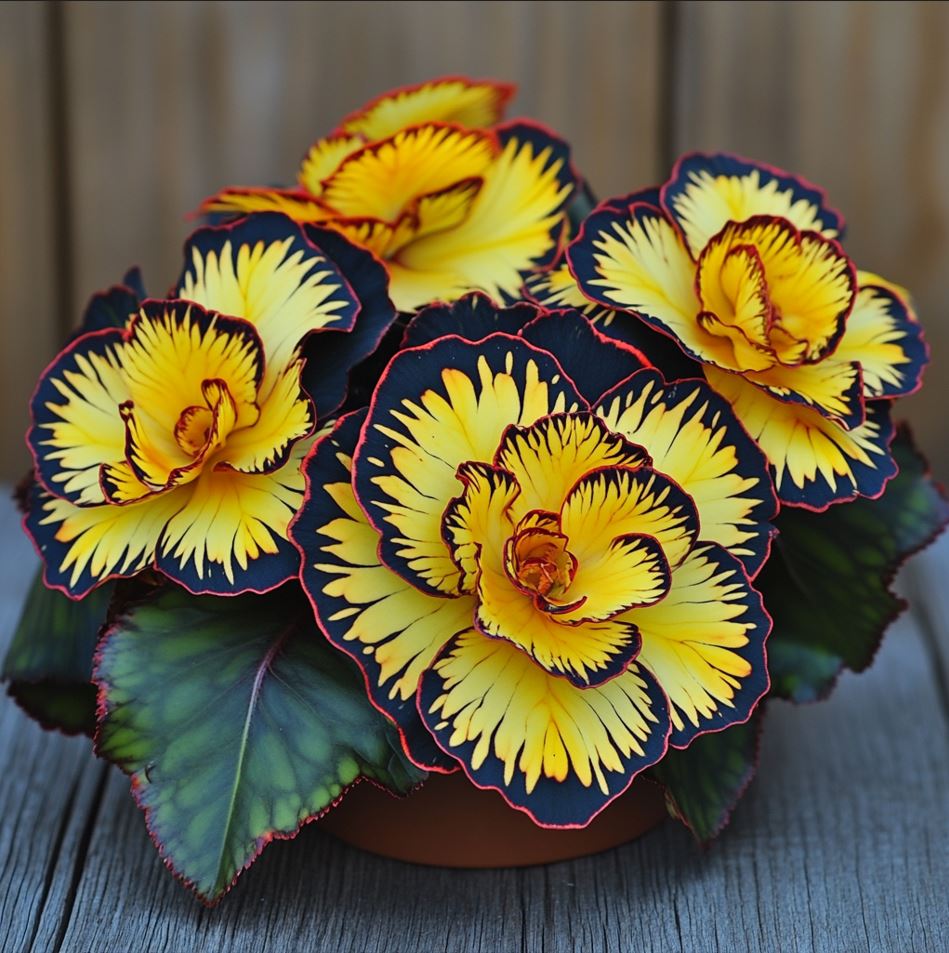
Watering Rex Begonias can be tricky, as they’re susceptible to both overwatering and underwatering. The key is to keep the soil consistently moist but not waterlogged. Water your plant when the top inch of soil feels dry to the touch, but before the leaves start to wilt. Always use room temperature water to avoid shocking the plant’s roots.
It’s important to note that Rex Begonias are sensitive to fluoride and other chemicals commonly found in tap water. If possible, use rainwater or distilled water for your plants. If you must use tap water, let it sit out overnight to allow chlorine to evaporate before using it on your plants.
Feeding and Pruning for Optimal Growth
Like all plants, Rex Begonias need nutrients to thrive. During the growing season (spring and summer), feed your plant every two to four weeks with a balanced, water-soluble fertilizer diluted to half strength. Be cautious not to over-fertilize, as this can lead to salt build-up in the soil and damage to the plant.
Pruning is an important aspect of Rex Begonia care that’s often overlooked. Regular pruning helps maintain the plant’s shape and encourages bushier growth. Remove any dead, damaged, or diseased leaves promptly to prevent the spread of disease and to keep the plant looking its best.
Additionally, pinching back the growing tips of stems can encourage branching and result in a fuller, more compact plant. This is especially useful if your Rex Begonia is becoming leggy or sparse.
The Rex Begonia in Culture and Design
Beyond their horticultural appeal, Rex Begonias have found a place in various aspects of culture and design. Their striking appearance and the care they require have imbued them with symbolic meanings and made them popular subjects in art and interior design.
Symbolism and Cultural Significance
In the language of flowers, begonias in general are often associated with caution, gratitude, and uniqueness. The Rex Begonia, with its particularly ornate foliage, can be seen as a symbol of individuality and personal style.
In some Asian cultures, begonias are considered symbols of good fortune and harmony. Their balanced, symmetrical leaves are thought to represent equilibrium in life. This cultural significance has contributed to the popularity of Rex Begonias in feng shui practices, where they’re sometimes used to bring positive energy into living spaces.
The care required by Rex Begonias has also led to them being associated with nurturing and attentiveness. Gifting a Rex Begonia can be seen as a gesture of care and a recognition of the recipient’s ability to nurture and appreciate beauty.
Rex Begonias in Interior Design
Interior designers have long recognized the potential of Rex Begonias to add a touch of luxury and exoticism to indoor spaces. Their varied colors and patterns make them versatile design elements that can complement a wide range of decor styles.
In minimalist interiors, a single Rex Begonia can serve as a stunning focal point, its intricate leaves providing a contrast to clean lines and neutral colors. In more eclectic or maximalist spaces, Rex Begonias can be grouped with other plants to create lush, tropical-inspired vignettes.
The colors of Rex Begonia leaves can also be used to tie together different elements in a room. For example, a Rex Begonia with burgundy and silver leaves could echo the colors of nearby furniture or artwork, creating a cohesive look.
Rex Begonias in Art and Photography
The visual appeal of Rex Begonias has made them popular subjects in botanical illustration and photography. Their intricate patterns and rich colors provide endless inspiration for artists seeking to capture the beauty of the natural world.
In botanical art, Rex Begonias challenge artists to accurately depict the complex interplay of colors and textures on their leaves. This has resulted in stunning watercolor paintings, detailed pencil drawings, and even abstract interpretations that capture the essence of these remarkable plants.
Photographers, too, have found Rex Begonias to be captivating subjects. Close-up shots of Rex Begonia leaves can resemble abstract paintings, revealing intricate details that might be missed by the naked eye. These photographs not only celebrate the beauty of the plants but also invite viewers to consider the complexity and diversity of the natural world.
Conclusion
The Rex Begonia stands as a testament to nature’s artistry and the human passion for cultivating beauty. From its stunning foliage to its rich cultural significance, this remarkable plant offers far more than mere ornamental value. It invites us to observe closely, to nurture carefully, and to appreciate the intricate wonders of the plant kingdom.
As we continue to bring nature into our homes and lives, the Rex Begonia serves as a vibrant reminder of the diversity and resilience of plant life. Whether you’re a seasoned plant enthusiast or a curious newcomer to the world of indoor gardening, the Rex Begonia offers a unique opportunity to connect with nature and cultivate a piece of living art in your own space.
In caring for these plants, we not only enhance our environments but also gain valuable insights into the delicate balance of life and the importance of attentiveness and care. The Rex Begonia, with its myriad colors and patterns, stands as a beautiful embodiment of the endless variations and possibilities found in nature – a true masterpiece that continues to captivate and inspire.
